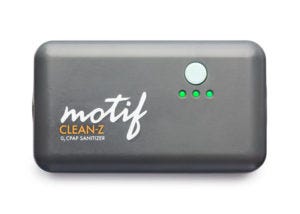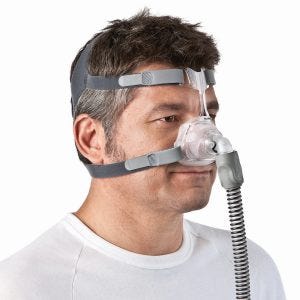How To Clean Cpap With White Vinegar
Medically reviewed by Michelle Worley, RN
Have you ever noticed that after a while items like coffee, your retainer, or a cup that has been left out get a little moldy? Even though you didn't purposely introduce mold or germs to these items, it still collected and flourished. You need to clean them on a regular basis to avoid getting sick. You need to clean your CPAP for the same reason!
That's right, while you're cleaning your everyday items, don't forget to clean your CPAP machine and CPAP supplies too! Keep reading to learn how to clean your CPAP!
Why CPAP Cleaning is Important
If you don't clean your CPAP equipment then dust, oils, and dead skin cells can collect on the inside and become a breeding ground for bacteria, mold, and germs, causing you to get sick more often. If you're suffering from sleep apnea, the last thing you want to do is introduce pathogens into your airway, or cause illnesses like sinus infection or pneumonia.
Not only is regular cleaning important for health care reasons, but daily cleaning can help you get the most out of your CPAP therapy. Best of all, it can help you save money because keeping your equipment clean helps it last longer, so you won't need to replace parts as often.

What CPAP Cleaning Supplies Do I Need?
Everything you need for a clean CPAP is most likely already around your home! All you need is:
- Warm, clean water.
- A mild soap or dish detergent.
- Clean, dry towels.
- White vinegar.
- Space to allow your equipment to dry.
How to Clean Your CPAP

Cleaning Your CPAP Mask
Your CPAP mask (whether it's a face mask or nasal pillows) should also be cleaned weekly because it touches your face. Dead skin cells and bacteria can collect on your mask and spread right to your skin.
- Disconnect the mask from the tubing and disassemble all of the parts.
- Remove the headgear and set it aside, unless you would like to clean it with your mask.
- Place your CPAP mask parts in warm soapy water and swirl them around for about five minutes.
- Thoroughly rinse each piece and allow them to completely air dry before reassembling your mask. The headgear may take a bit longer to dry.
Cleaning Your CPAP Filters
Disposable filters will need to be thrown away and replaced on a regular basis depending on their recommended replacement schedule.
Reusable air filters will need to be washed about once a week depending on how much dust, pollen, and animal dander they collect from around your home. Cleaning them will allow them to effectively continue preventing irritants from entering your equipment.
- Rinse the filters under warm water and then squeeze the excess moisture out.
- Blot them dry with a clean dry towel and leave them to fully air dry before placing them back inside your CPAP.
- Once your white or grey filters become discolored then it's time to clean them or replace them.
Cleaning Your CPAP Machine
When it comes to cleaning your actual CPAP machine refer to your manufacturer's recommended schedule.
- ALWAYS unplug it first.
- Wipe the outside down with a clean, damp cloth to remove any dust.
- Dry it with a clean towel.
- Make sure it's completely dry before plugging it back in.
Cleaning Your CPAP Humidifier
If your CPAP machine has a humidifier you should clean it every other week.
- Begin by emptying any remaining water from the water chamber.
- Pour a solution of 1 part white vinegar and 5 parts water inside of it and soak for 30 minutes.
- Thoroughly rinse it with plain water, and give it time to fully dry.
- Depending on your humidifier, you can actually place it in the dishwasher to rinse and dry.
- Remember, only fill it with distilled water to prevent mineral build up.
Cleaning vs. Disinfecting
Generally, it's okay to clean your equipment about once a week, but if you're sick with something like an upper respiratory infection or experiencing allergies go ahead and clean your supplies before each use until your illness clears up.
A thorough cleaning will be more than enough to remove the dangers posed by most pathogens, and vinegar may be used to periodically reduce the dangers associated with mold and fungus.
If you're one of the millions of CPAP users who fall short of the manufacturer's recommended cleaning schedule, you may consider a CPAP sanitizing machine to reduce the risk from harmful bacteria or viruses between cleanings.
However, a sanitizer is no substitute for a little elbow grease, and you should still regularly wash your CPAP machine and parts to remove body oils, skin cells, and mineral buildup.
Can I Clean My CPAP With Vinegar?
Yes, but not as a replacement for a scrub with soapy water. Vinegar is safe to clean your CPAP supplies with, but won't remove any buildup. It actually helps to use a vinegar solution of 1 part vinegar to 3 parts water once a month to really disinfect your equipment like your mask and tubing.
- Allow each part to soak in the vinegar solution for about 30 minutes.
- Thoroughly rinse each item clean and hang them up to completely air dry.
- Do not reuse the vinegar and water solution. Dispose of it after every use.
- Do not clean cloth items such as your headgear or filters with vinegar.
Can I Clean My CPAP With Hydrogen Peroxide?
Maybe. Keep in mind, that the answer to this question is "maybe" means that this technique should be avoided until more research is performed.
Hydrogen peroxide can be used to sterilize items such as cuts or stainless steel, but how you use it is important. The concentrations sold in stores are very low, a 3 to 4%. Too much peroxide can easily burn your skin. Plus, there are concerns with it becoming toxic at certain temperatures and when introduced to various surface materials. Its form of oxidation may also be harmful.
To put it simply, using hydrogen peroxide to clean your CPAP could harm your health and your equipment.
Can I Clean My CPAP With Bleach?
Do not even think about it! Cleaning your CPAP with bleach could be harmful to your health, even if you dilute it with water. The fumes could hang around on your gear and irritate your lungs, even after thorough rinsing. Plus, getting any bleach on your skin could burn and corrode your supplies.
CPAP Cleaning Hacks
Although extremely beneficial, cleaning your CPAP can be a little time-consuming. Luckily there are a few hacks to speed up the process.
- Use a Clean-Z device to sanitize your CPAP mask, humidifier, and tubing for you. Simply place them inside the provided bag and remove them later. No water or chemicals are required. Your CPAP supplies will be completely disinfected without you having to take anything apart.
- Save time with the Lumin CPAP cleaner to remove 99.9% of germs and pathogens in as little as five minutes.
- Use CPAP machine cleaner, such as RespiSoak, an alcohol-free cleaning solution that's safe for all of your CPAP equipment.
- Check out spray mask cleaner! You can take it anywhere and use it to quickly disinfect and deodorize your mask and other accessories, such as your CPAP tubing.
- Get some CPAP cleaning wipes to quickly disinfect your mask at any time to remove dust, grease, bacteria, and more. Wipes can also be used on other CPAP accessories, including the tubing.
- Wash your face prior to using your CPAP mask to reduce the amount of oils and dead skin cells that it comes into contact with.
How Not To Clean Your CPAP
Now that you know what to do, it's also important to remember what NOT to do. You don't want to break your equipment or void any warranties, right?
- Do not place anything in your humidifier besides distilled water. Unclean water could cause mineral build up and increase your risk of getting sick. Also, essential oils or CBD drops have chemical additives that could break down your CPAP supplies, leading to cracks and air leaks.
- Do not put your equipment in the dishwasher. Some items, like the humidifier, may be dishwasher safe, but other items like your mask and tubing probably aren't. Refer to your CPAP manual before even considering placing anything in the dishwasher.
- Avoid cleaning your equipment with harsh chemicals. Only use certified CPAP cleaning devices and soaps or mild dish detergents to avoid inhaling residue left behind like alcohol, ammonia, or bleach.
- Never place your headgear in the washing machine or dryer. Doing so could stretch it out, then it may not fit correctly anymore and it could rip!
- Do not mix hydrogen peroxide and vinegar in an attempt to make your own cleaner. It creates a peracetic acid that could irritate your skin and eyes as well as cause damage to your lungs.
Happy CPAP Cleaning
Prevent yourself from getting sick and keep your equipment in top working order to last longer by regularly cleaning your CPAP. If you don't have time for a weekly scrub a dub dub, then check out our cleaning hacks to speed up the process!

How To Clean Cpap With White Vinegar
Source: https://cpapsupplies.com/blog/best-ways-to-clean-your-cpap
Posted by: wrightcrummon.blogspot.com

0 Response to "How To Clean Cpap With White Vinegar"
Post a Comment